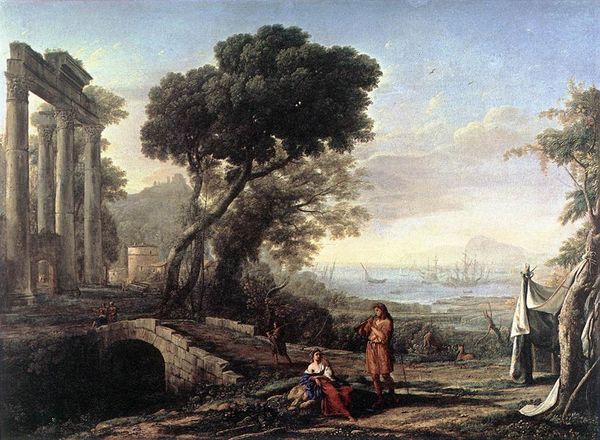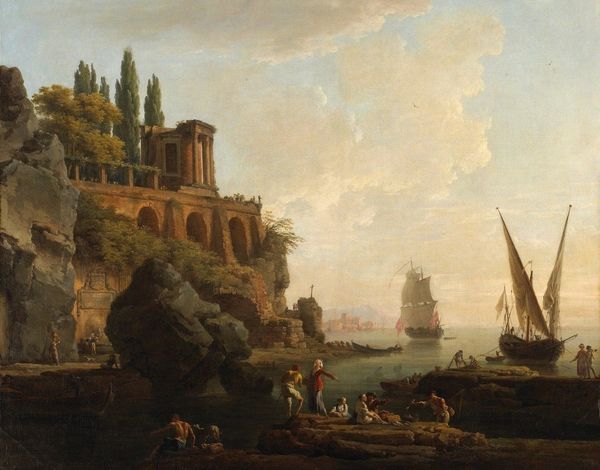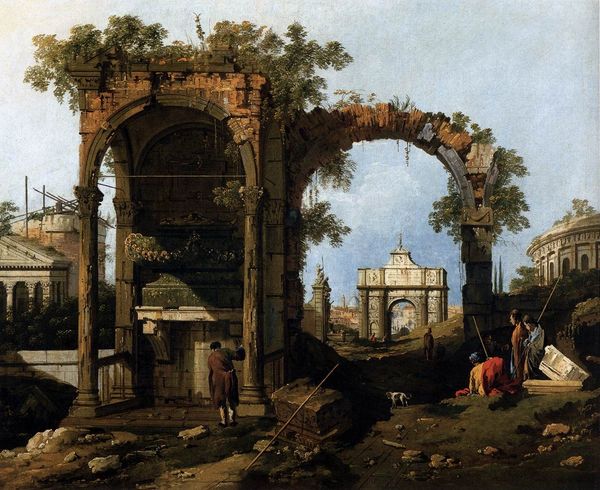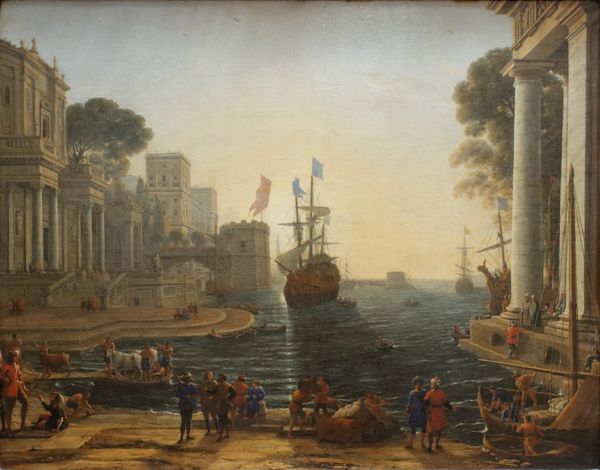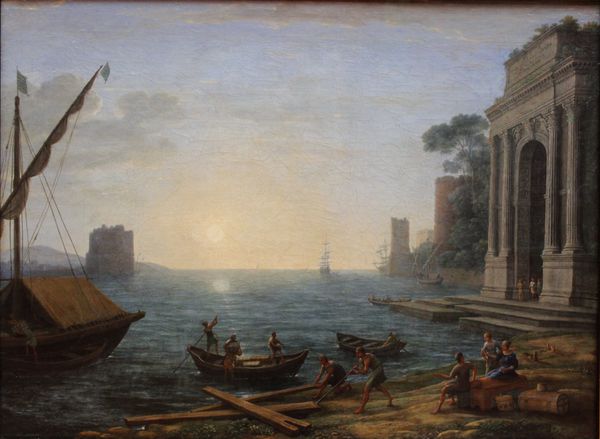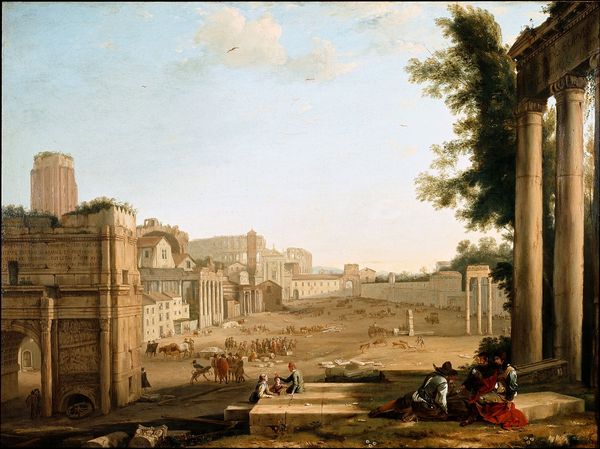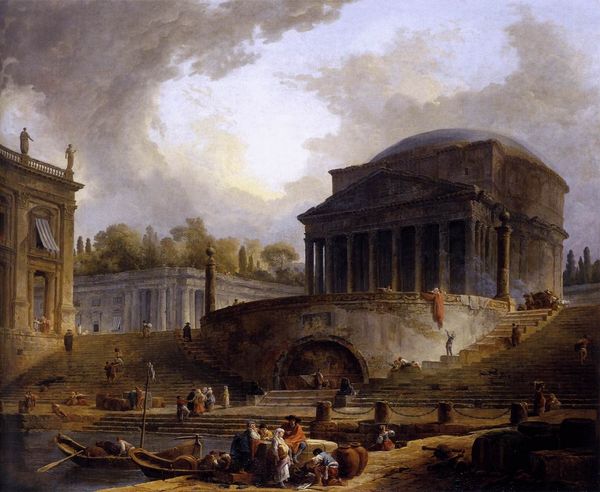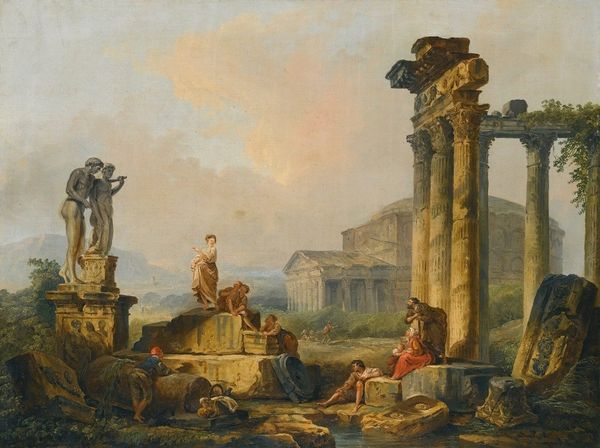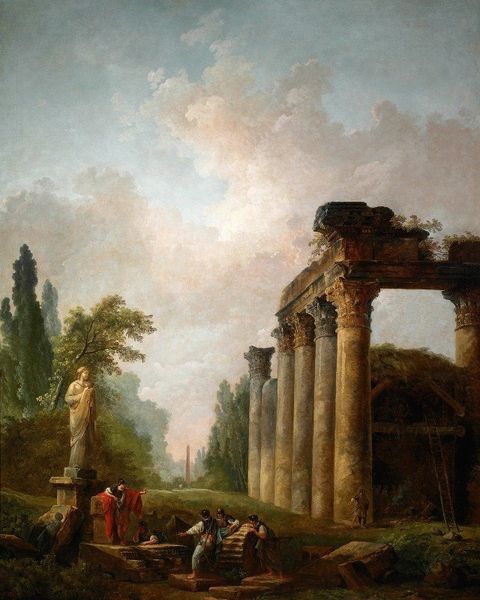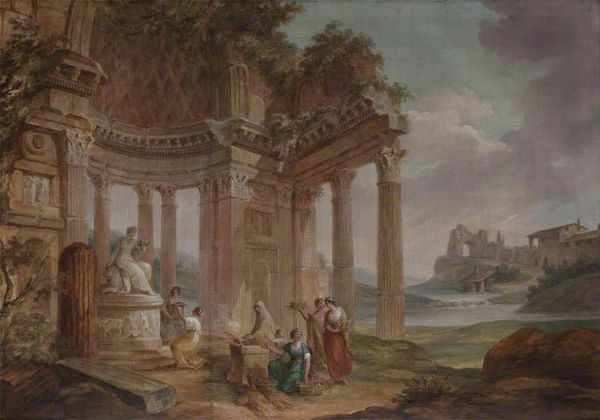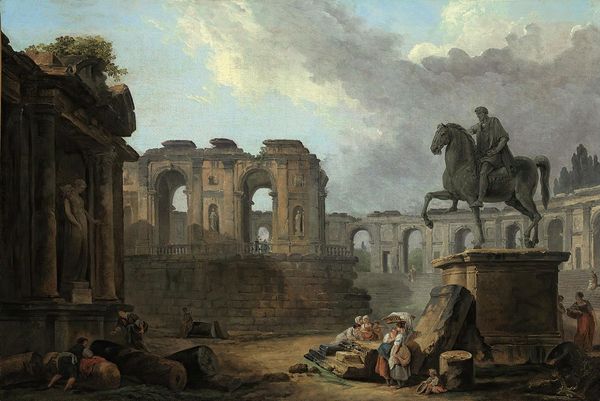
painting, oil-paint
#
baroque
#
painting
#
oil-paint
#
landscape
#
classical-realism
#
figuration
#
romanesque
#
oil painting
#
roman-mythology
#
mythology
#
history-painting
Dimensions: 149.2 x 120 cm
Copyright: Public domain
Curator: Before us hangs Claude Lorrain's "Aeneas and Dido in Carthage," completed around 1675. It’s a gorgeous oil painting presently residing at the Kunsthalle Hamburg. Editor: Immediately, I'm struck by the overwhelming sense of impending doom. Even the luminous landscape can't mask the tension between these figures. Curator: Yes, there’s an almost theatrical arrangement to the characters, reminiscent of staged tableaux. Notice the prevalence of architectural features—they really emphasize themes of power and civilization. Lorrain consistently used the light to create depth, inviting the eye deeper into the scene, both literally and metaphorically. Editor: Definitely. And situating the narrative from Virgil's Aeneid within the backdrop of what looks like idealized Roman architecture… It's a complex commentary on colonialism and cultural exchange. Aeneas's "destiny," as it’s portrayed, is dependent upon the tragedy and exploitation of Dido. Look how isolated she appears from her people! Curator: You raise a powerful point. And consider the deer—it could represent Dido’s vulnerability or the hunt, a symbol linked with royalty but also mortality, reminding us of her fate and ultimately her suicide in the original story. Classical Roman dress serves to add gravitas. The light itself could symbolize divine will, almost preordained. Editor: Precisely. That’s precisely where my discomfort originates. This aesthetic beauty acts as a veneer for a complicated scene of betrayal and conquest, softening and somewhat obscuring its ethically fraught foundation. We should engage critically with those narratives now more than ever, I believe. Curator: I see what you mean; there are layers of complexity beneath this picturesque facade, both beautiful and troubling. Editor: It serves as a constant reminder to reflect critically on these historical images and question who truly profits from such supposedly “golden age” stories.
Comments
No comments
Be the first to comment and join the conversation on the ultimate creative platform.

